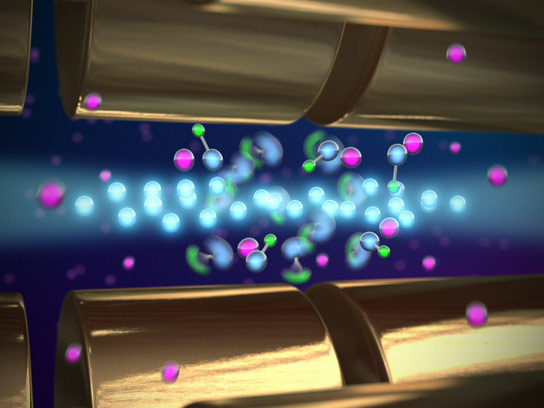Bonding of nanostructures and microstructures in science (nanoelectronics) (PhD in nano-microelectronics)
Researcher and author: Dr. ( Afshin Rashid)
Note: Regarding microstructures in nanoscience, it may be thought that the materials seen as a mass around them originated from the expansion of the early structural order. In other words , it may be assumed that mass nanostructures are the extended form of the primary structure and therefore have all the properties and behavior of the primary structure .
This perception is different from the behavioral observations of materials. For example, in the structure of graphene, it is expected that the strength will be different in different directions, because the initial structure has a high strength in the direction of the beehive plates and a low strength in the direction perpendicular to the plates . Therefore, graphene should only be able to move nanoparticles on each other in certain directions. Graphene is the best and most practical raw material in the production of nanochips and nano-electronic components.
As a result, the factors influencing the bulk properties of materials in a concise and simple way are the constituent elements of the material, the structure of the material and the microstructure of the material. In simple terms, the properties of materials can be considered similar to the characteristics of a city. For example, the architecture of nanomaterials in electronic discussion is very similar to the constituent elements of materials in the form of materials used in city buildings, the structure of materials that determine how the elements are placed next to each other and the connections between them in the form of city buildings. Complete integrity) and microstructure, which determines how the microscopic structure fits together, are considered as specific patterns. Microstructures will also be highly critical and practical in science (nanoelectronics). Nanostructure is defined as any structure with one or more dimensions and is measured in the nanometer scale range. Nanostructures Refers to materials or structures that have at least one dimension between 1 and 100 nanometers . The importance of the nanoscale in changing the properties and characteristics of materials in these dimensions. Properties such as electrical conductivity, electromagnetic properties and so on. The beginning of changing the properties of a material by shrinking it depends more than anything on the type of material and the desired property. For example, as thedimensions of a materialshrink , some of the nanomolecular electromagnetic properties of materials, such as the conductivity of nanoparticles in materials, generally improve. This increase in strengthdoes not occuronly in the range of a few nanometers, and the strength of materials of several tens or even hundreds of nanometers may be much greater than that of large-scale bulk material. These changes can be measured using optical characteristics.
Conclusion :
Regarding microstructures in nanoscience, it may be thought that the materials seen as a mass around them originated from the expansion of the early structural order. In other words , it may be assumed that mass nanostructures are the extended form of the primary structure and therefore have all the properties and behavior of the primary structure .
Researcher and author: Dr. ( Afshin Rashid)
PhD in Nano-Microelectronics




